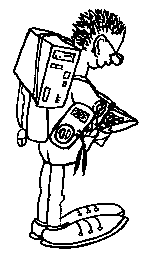Radio Loewe Opta Komet 53
I bought this radio as defect, does not play for some euros. It had no power plug anymore, and my initial idea was to tear it apart to salvage the ancient parts used in the 50ies.
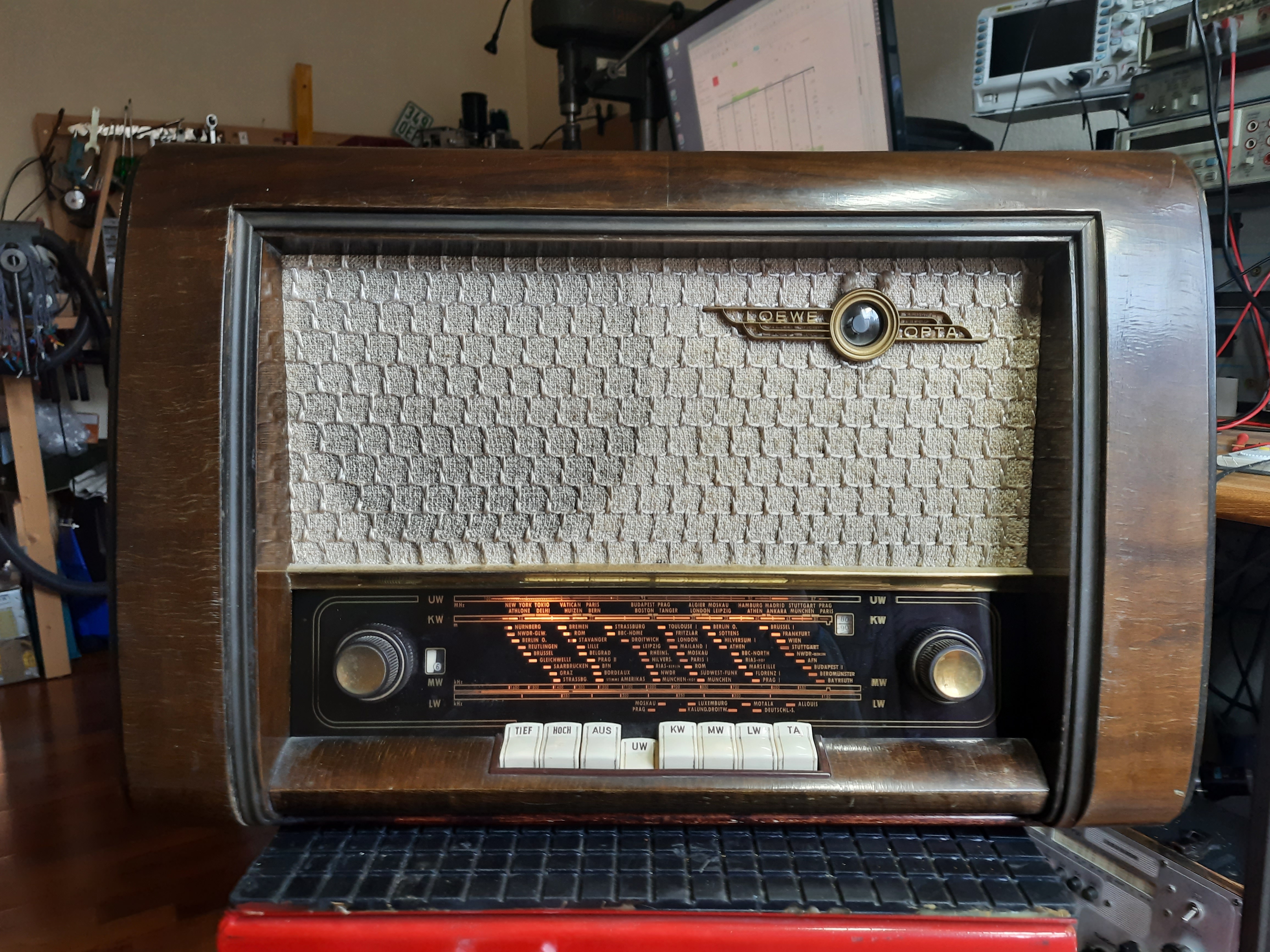
Radio after minor repair work
The wooden case was in quite good condition and all switches and knobs were present. So I decided to check for the issues in the radio and maybe repair it.
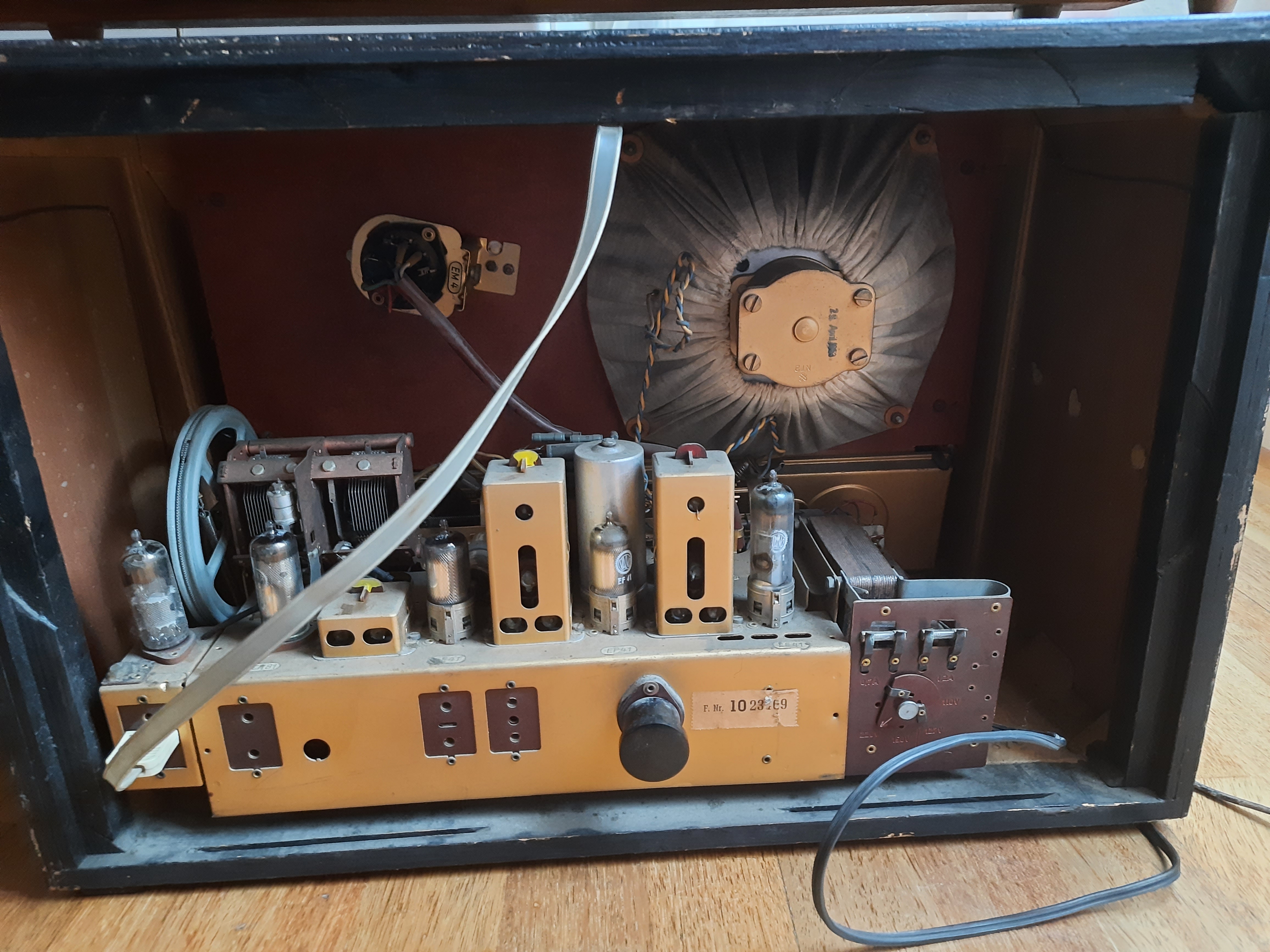
Look inside the case. At top left, we can see the socket of the magic eye, an EM4. Top right is the speaker, with some fabric around it. At the bottom left, we see the HF input tube, an EF80, with antenna connector in. 2nd tube from the left is ECH81, then 2 times EF41 and the tube at the right is an power pentode EL41 to deliver the 2.5 watts or so. The arrangement right to the EL41 is the power supply transformator. The big knob in the middle is a connector for a remote control (wired of course). The big wheel is driving the variable cap to select radio stations.
For first test, I hooked up the radio to my isolating adjustable transformer where I can start with 0 volts up to 250 volts for power supply of the radio. If there would be a short or so, I could stop at any time before some serious would happen…
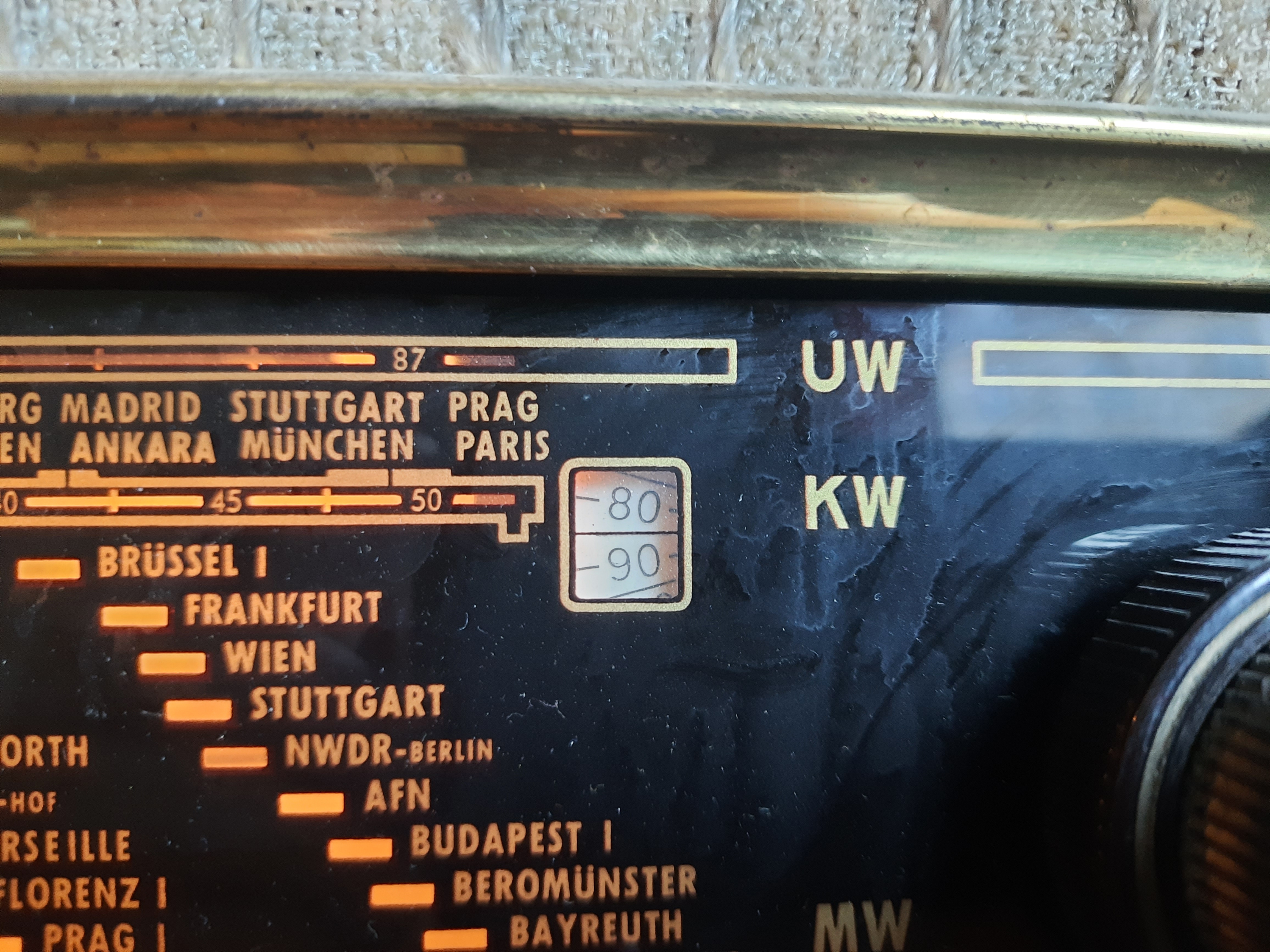
Shortwave fine tuning
All tubes were glowing. So their filament at least works.
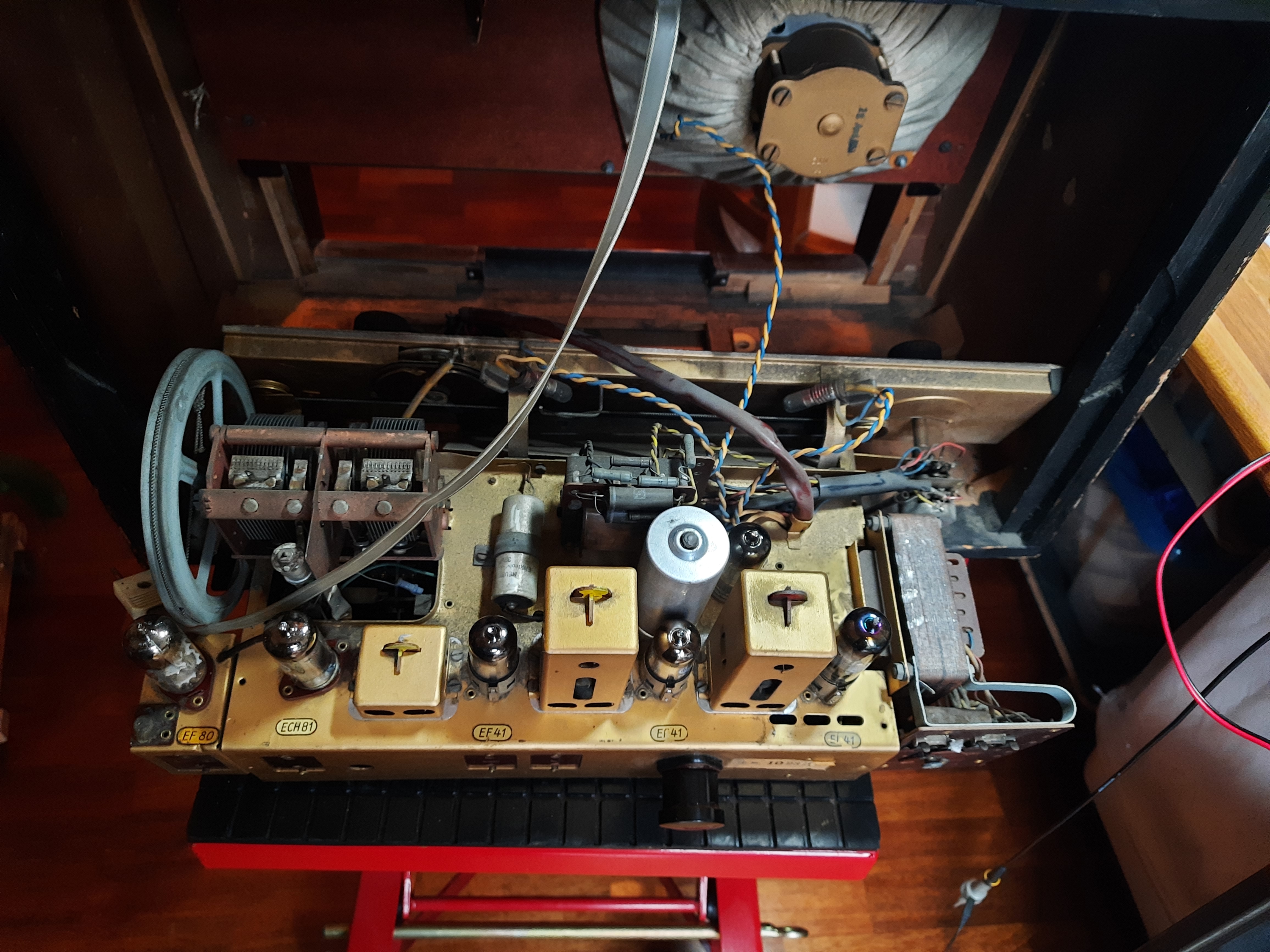
Chassis pulled out.
This radio has a turntable input, so I used my mobile phone output to check that the NF amplifier works. It did, and I could hear the music quite loud from the tube amplifier part.
When removing the bottom carton, I found there the schematics. What a nice idea from the old engineers…
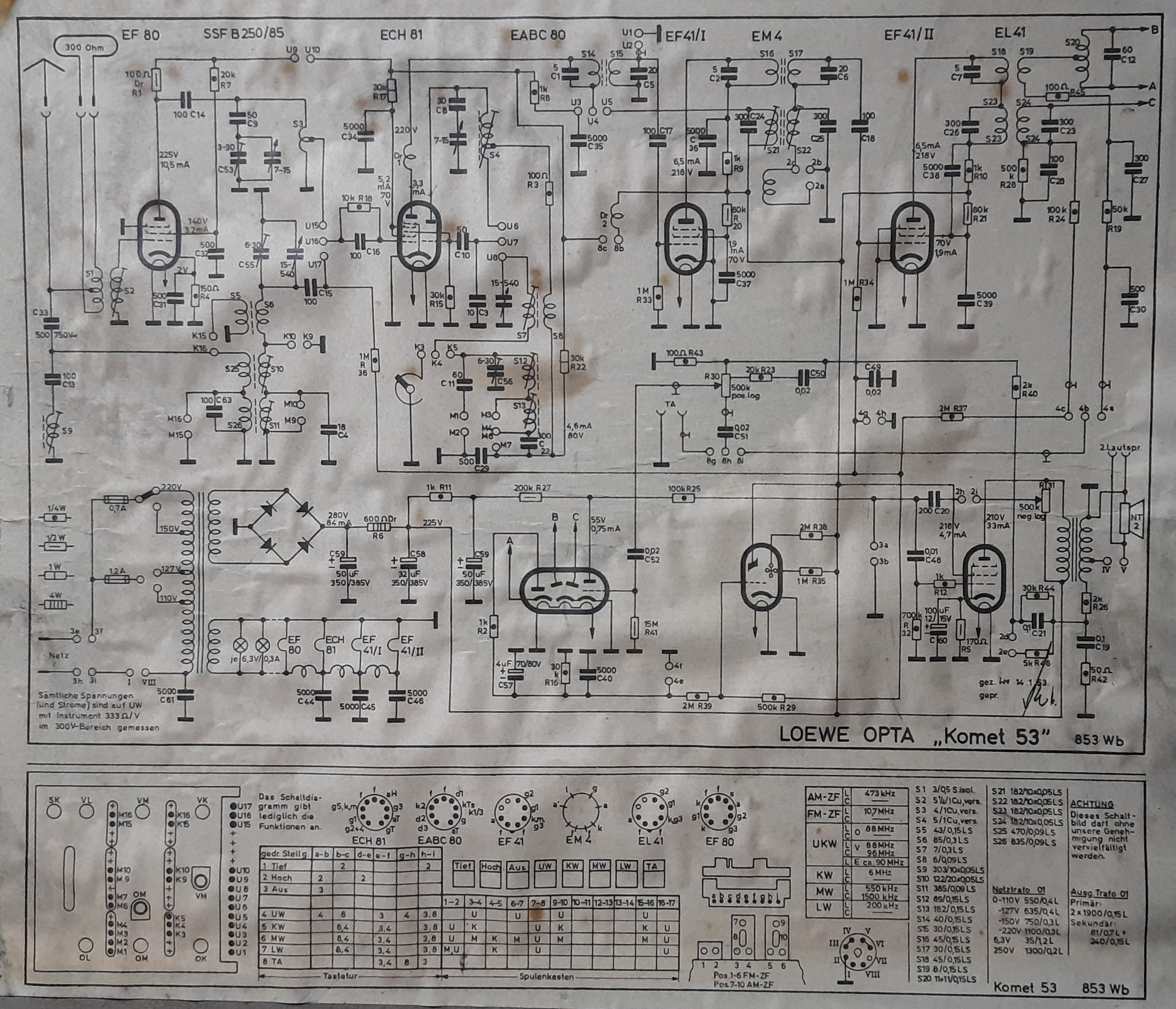
Komet 53 schematics. It already contains some kind of modernity compared to pre-war receivers, because it uses a semiconductor rectifier - a SSF B 250/85
The schematics told me that the EL41 is working. So far I had no radio sound and no magic eye. It stays 100% black.
I decided to buy an HF generator for further testing. The device, a WF PG1, is described here. It arrived some days later and need also to be repaired :-) . After repair, I could continue with the Komet 53…
When creating a 90 Mhz FM modulated signal at antenna, I checked the anode of EF80 with an oscilloscope. Some signal was there. I repeated that with ECH81 ( ok) and first EF41 - no signal there. When switching the two EF41, the signal was there. So I derived from that that the first EF41 was broken. I ordered that tube as NOS from a german electronics seller for about 6 euros, plugged it in, and: sound was there!
The sound was not perfect, I guess the radio was working the first time for 30 or 40 years. But I was proud anyway :-)
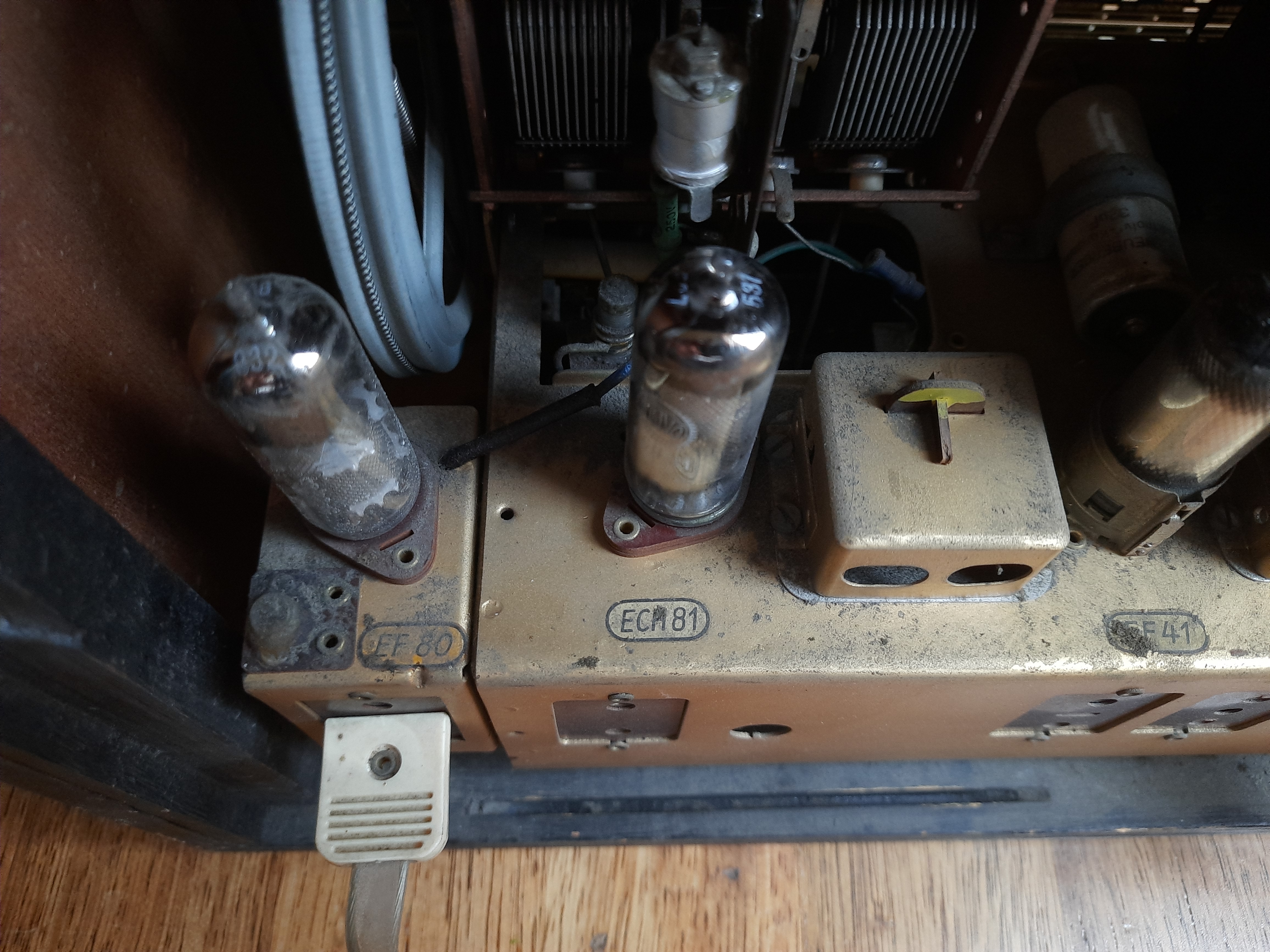
HF/IF section. The tube EF41 at the right was found to be broken
Next thing was to check the magic eye. It does emit nearly no light. This is a very early version, the EM4. Magic eyes do age, and loose their brightness with time.
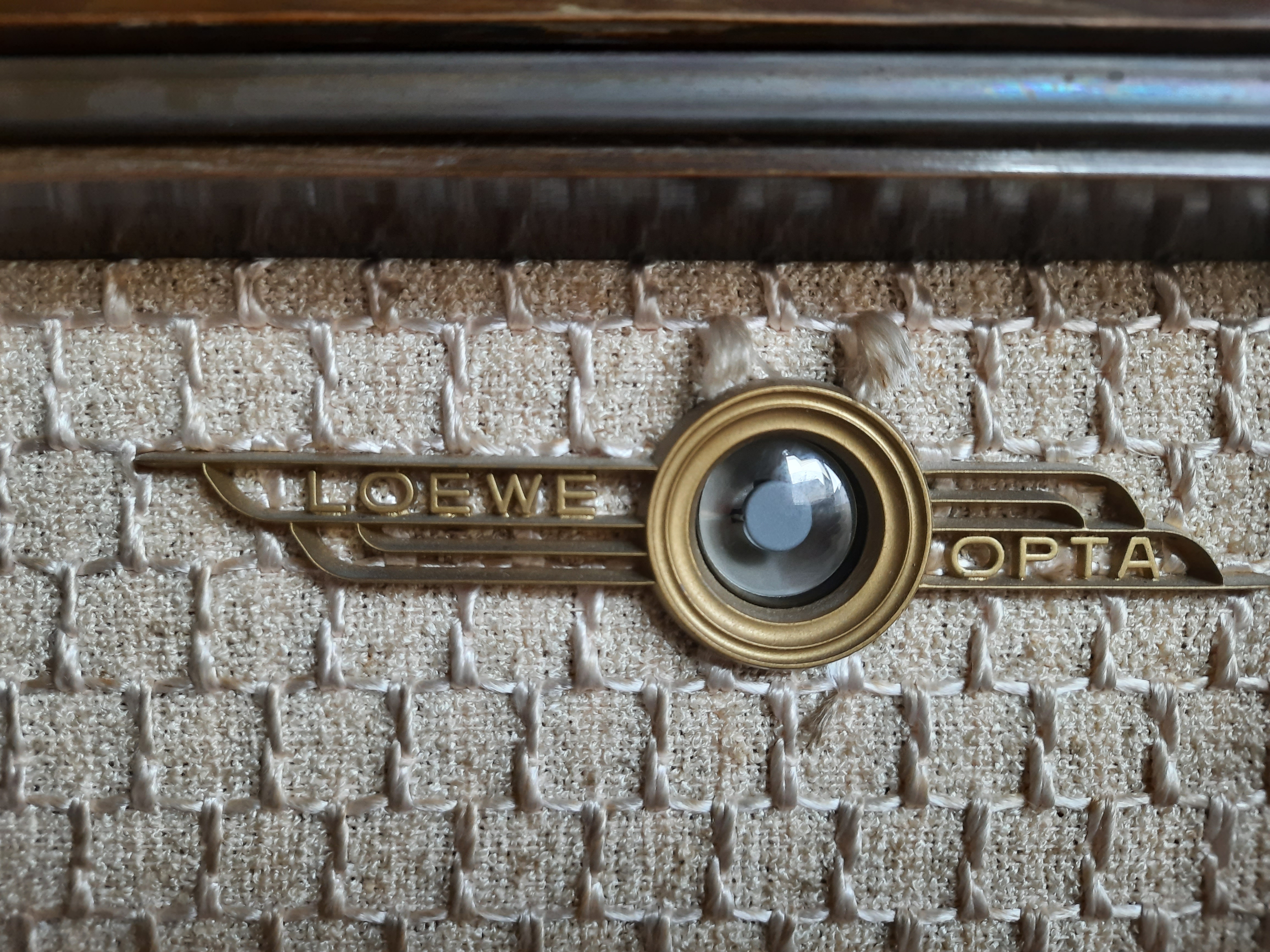
Magic eye
How a magic eye works is described here . The EM4 is well described here . And there is also described how an aged magic eye still can be used .
So I plugged out the magic eye to check if the tube is working at all.
The first image below shows what can be seen if the tube is attached to the radio set and radio gets 200 volts AC.
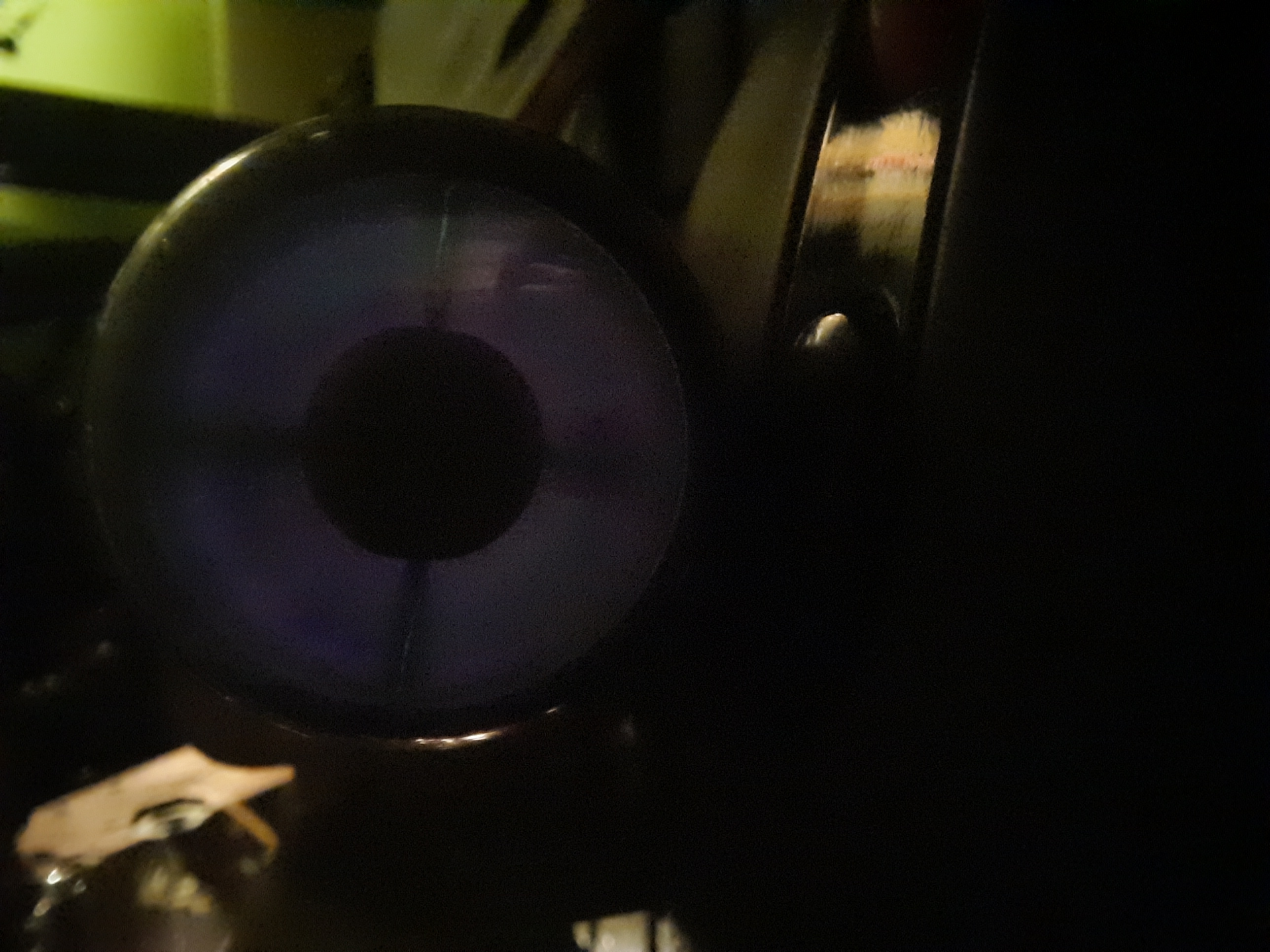
A very little brightness can be seen. Only if room is dark.
Next I have connected the tube to my NEVA power supply to test it.
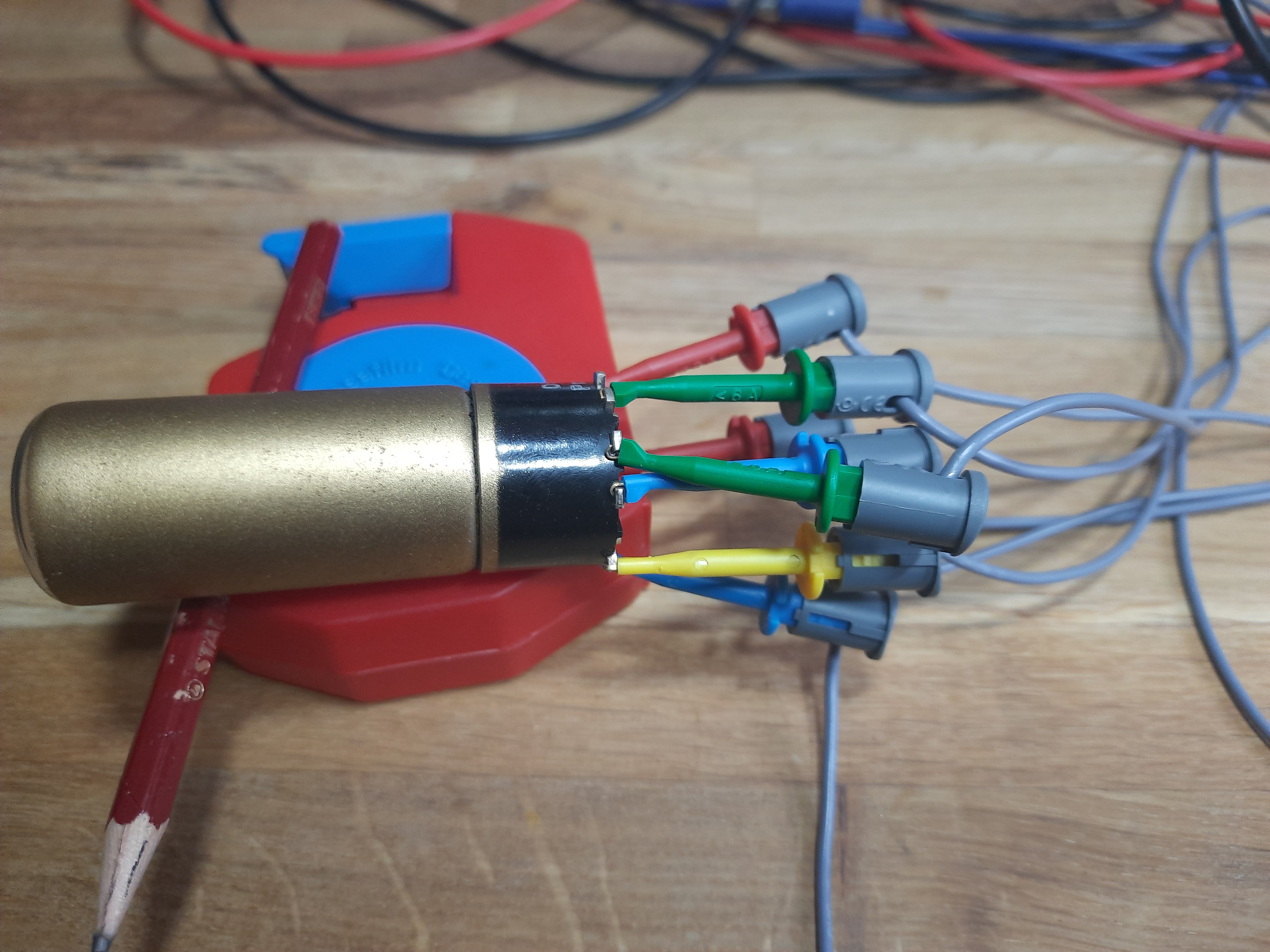
The next image shows the tube when connected to 225 volts and 2 resistors with 1 Megaohms are used.
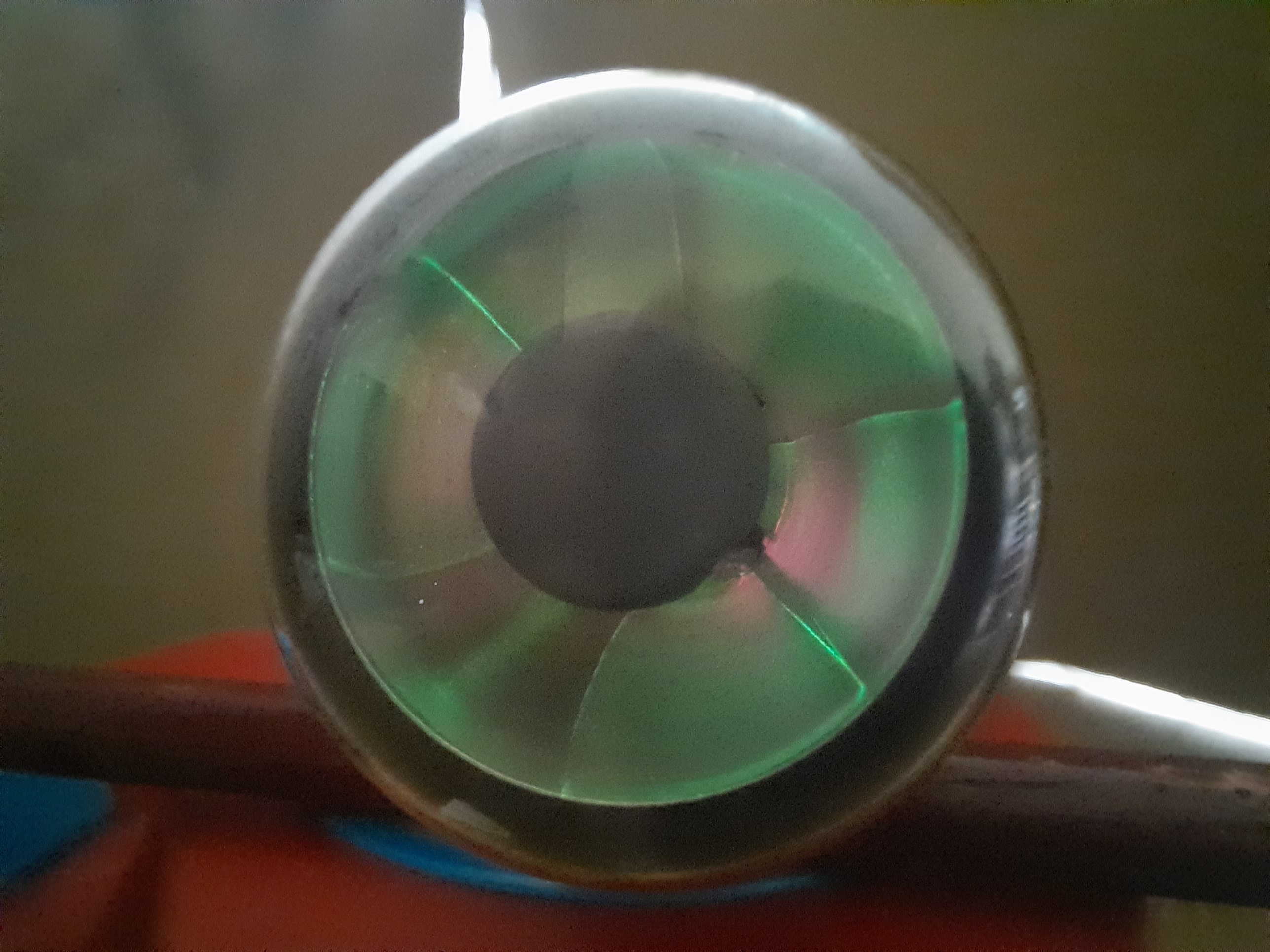
Tube a t 225 volts plate voltage
And the next image shows the tube at 364 volts plate voltage.
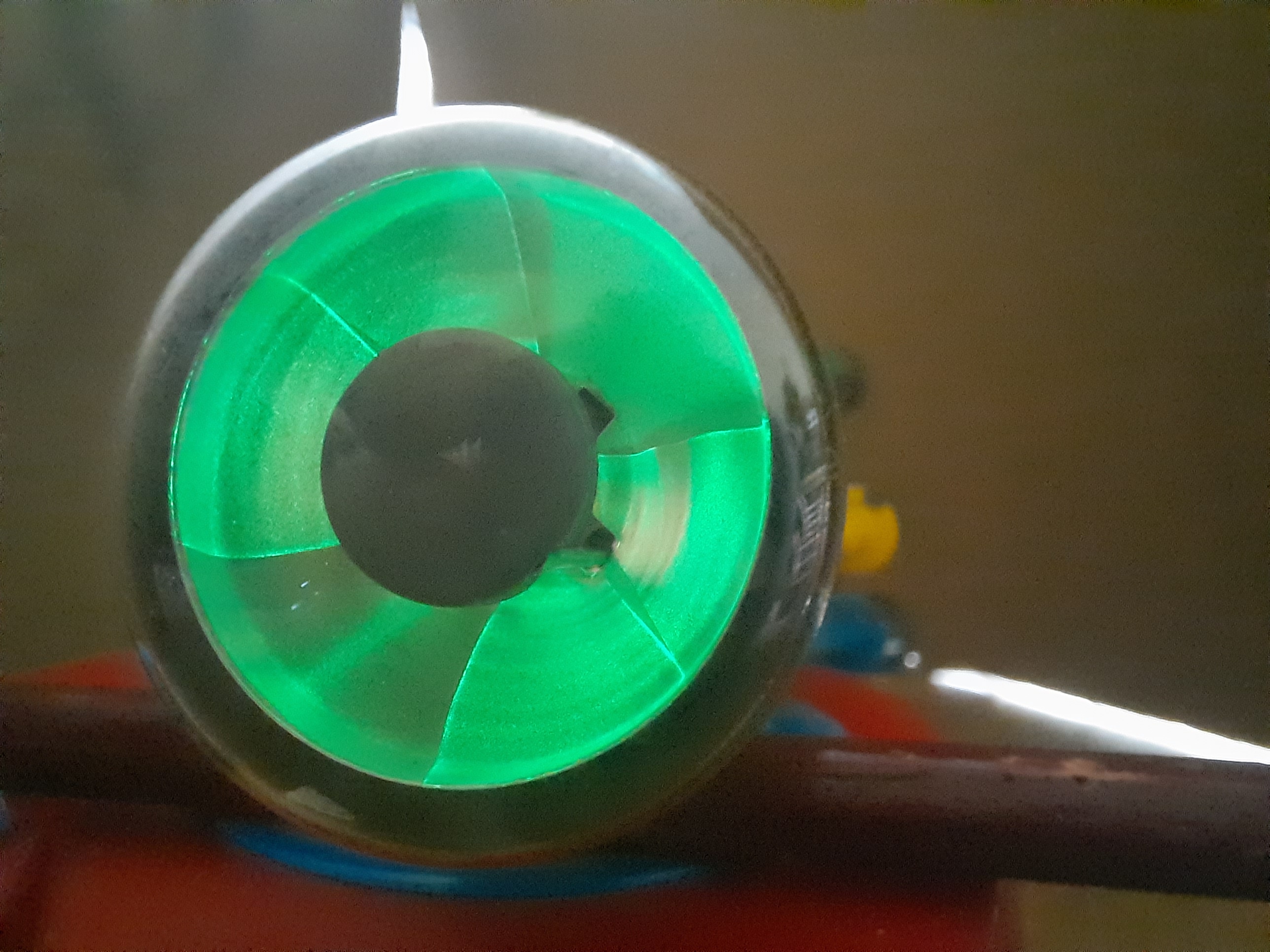
Tube at 364 volts plate voltage.
So the tube is not broken, but has aged.
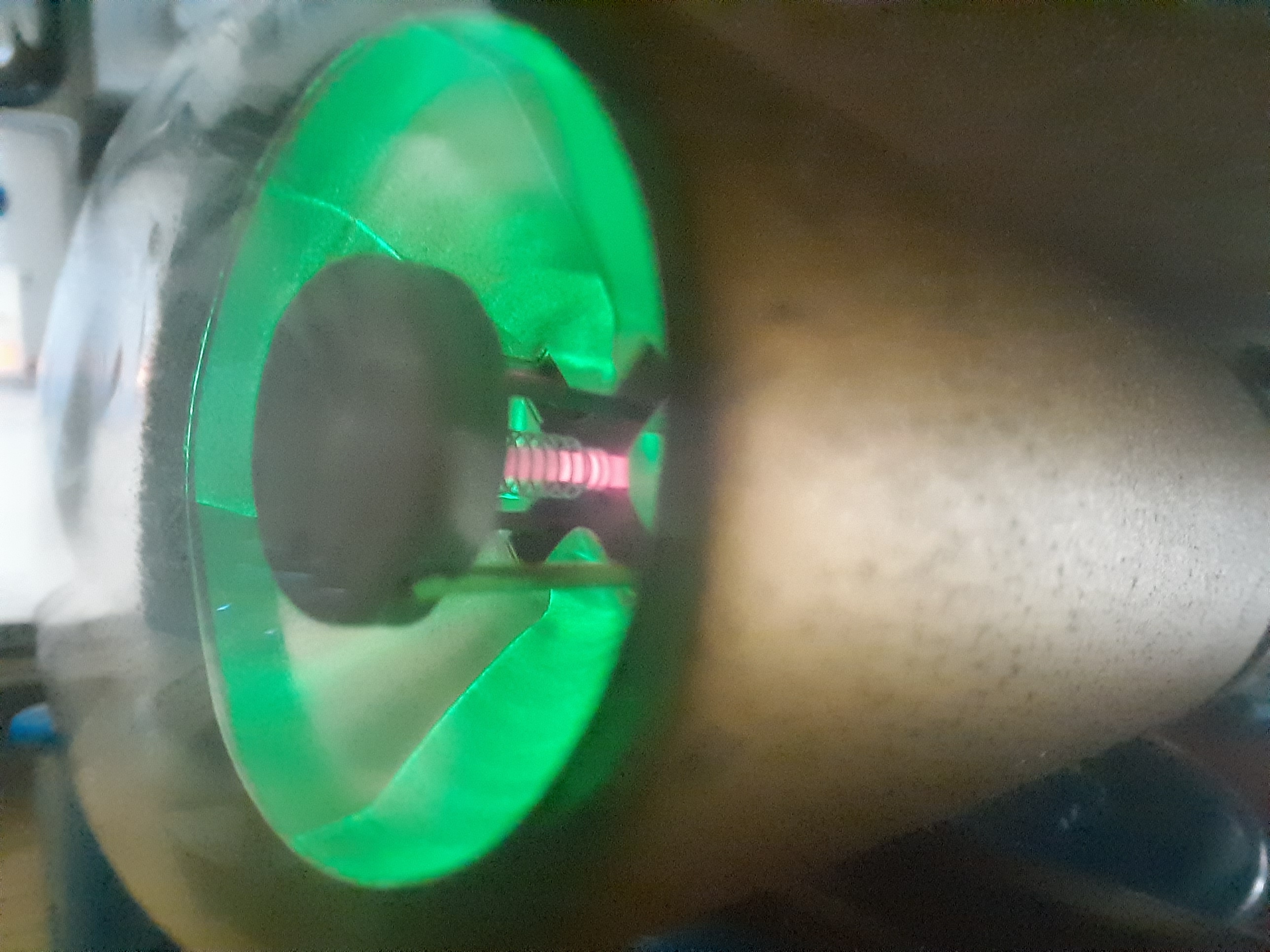
Here, the filament glowing can be seen
Next I tried to vary the gate voltage.
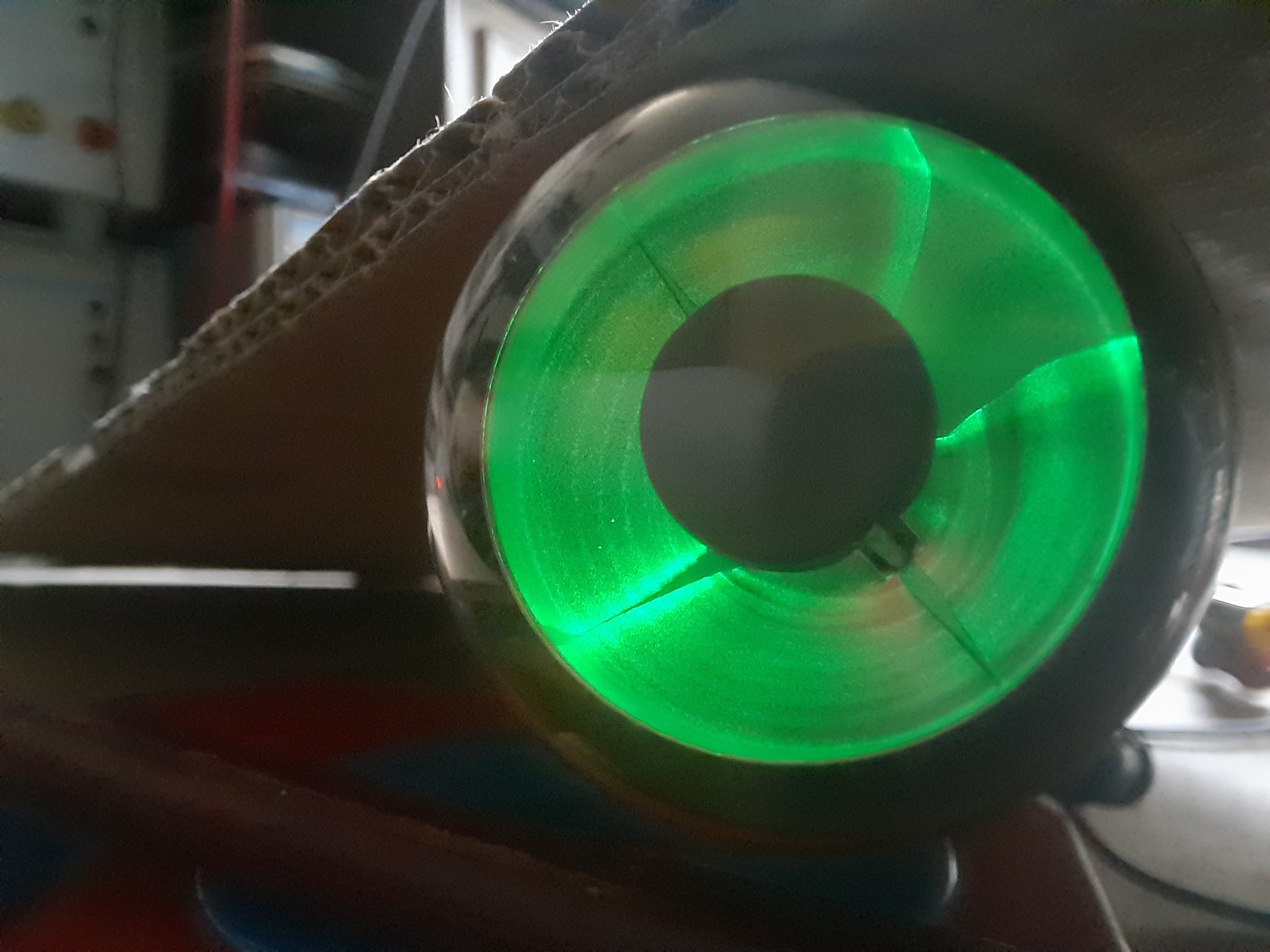
High signal, lower quarter is 100% and upper quarter is already lets say 20% filled. in this and following image, tube connectors 1-4 are on top
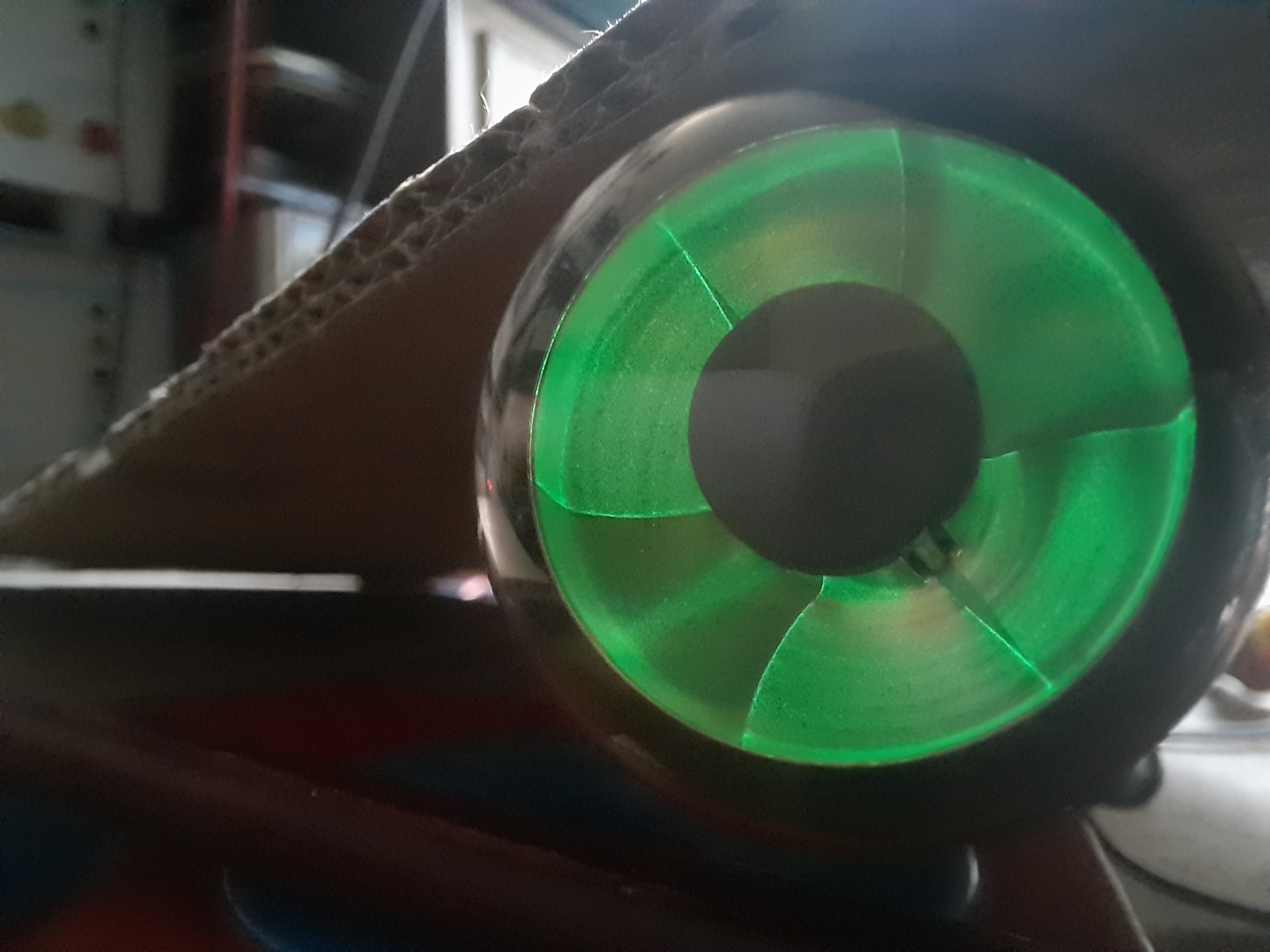
Low signal, lower and upper quarter are not 100% filled
This all looks ok, so I think the tube is a) undervoltaged and b) does not get proper gate voltage on the radio.
